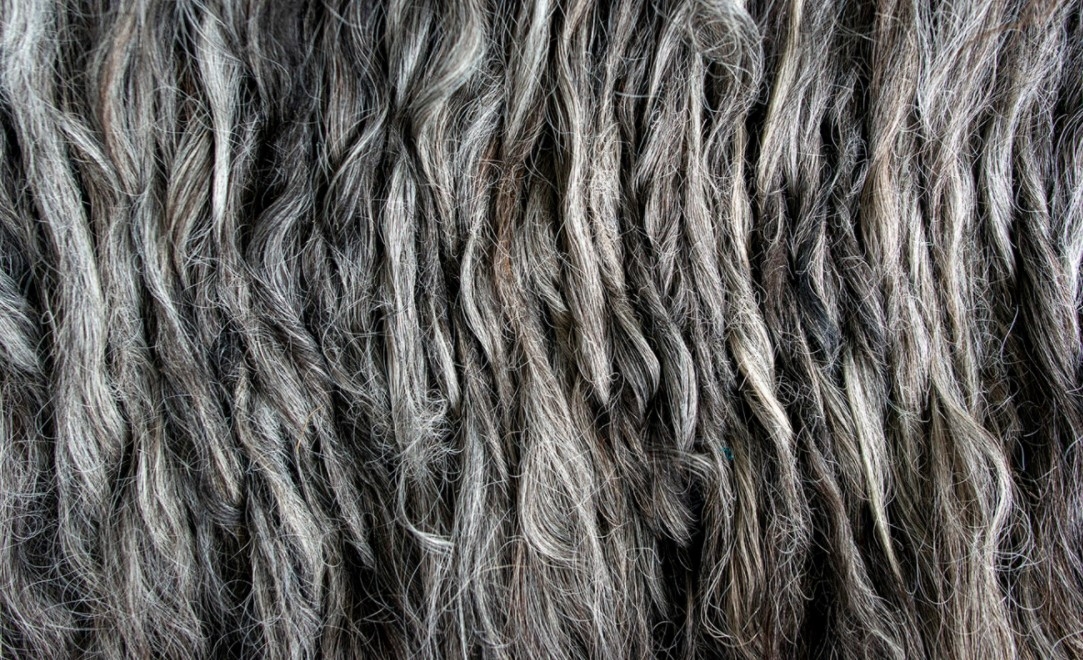From 2019 to 2021, Robberstad used GBS bells to track two sheep belonging to a particular Norwegian breed – the spælsau – while they grazed on alpine pastures. In this way, she gained insight into the sheep’s migration patterns over time. She processed the wool from these sheep and wove it into a vararfell – a type of textile that functioned during the Viking Age as a boat rug, a raincoat and outerwear. The vararfell in Robberstad’s exhibition represents the sheep’s life in alpine pastures. The wool is sorted – the outer layer is separated from the under layer – then washed and dried. The under layer is carded and spun using a spindle, then woven with the outer wool on a warp-weighted loom.
The black or pigmented wool and the wool from old sheep breeds are the types farmers get the least or no money for, but they are also the wool that has been used by humans since sheep were domesticated 11,000 years ago. Robberstad puts the focus on traditions, not merely in terms of handicraft, but also as regards cultural heritage and the long traditions of living together with, side by side, off of, and for animals.
Anne Helen Robberstad (b. 1970) is from Haugesund and lives and works in Stavanger. She graduated from the Art Academy in Trondheim in 2000. She works with video, light and photos, often combing the media to create a unified installation. Themes such as dilapidation and belonging, death, and how nature hangs together, are often addressed in her art, so also the relationship between people, animals and places. In recent years she has explored the boundaries between video art and the documentation genre.
Robberstad has participated in numerous exhibitions in Norway and abroad, among others, at the Intercultural Museum in Oslo, Henie Onstad Art Centre (Høvikodden), Trøndelag Centre for Contemporary Art (Trondheim), and Bilbao Arte in Spain. She has contributed to various film festivals such as Kurzfilm Festival in Hamburg and VDOR Break 21 in Lubliana.
http://www.annehelenrobberstad.com




